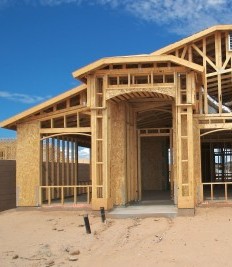 From mortgage to equity to debt-to-income ratio, there are many terms associated with home ownership that can be quite confusing if you’ve never been on the market for a home before. ‘Conforming loan limit’ may be a less familiar real estate term than the rest, but here are some things you’ll need to know about it and what it could mean for your biggest investment.
From mortgage to equity to debt-to-income ratio, there are many terms associated with home ownership that can be quite confusing if you’ve never been on the market for a home before. ‘Conforming loan limit’ may be a less familiar real estate term than the rest, but here are some things you’ll need to know about it and what it could mean for your biggest investment.
What Is The ‘Conforming Loan Limit’?
The Federal National Mortgage Association (Fannie Mae) and the Federal Home Loan Mortgage Corporation (Freddie Mac) are legally required to provide loans for balances below a specific amount, and this amount is what is known as the ‘conforming loan limit’. While the loan amount is determined by credit history and income amount, these conforming loans that are less than the specific amount are considered lower risk. If a loan amount is above the conforming loan limit, it is known as a jumbo loan and usually comes with higher rates.
How The ‘Conforming Loan Limit’ Is Determined
The Federal Home Financing Agency determines any adjustments made to conforming loan limits and the decided-upon amount is based on the home prices from October to October for the previous year. This amount is released annually in November and is enforced the following January. While this limit was continued at $417,000 through 2016, the amount for regions like Alaska, Guam, Hawaii and the United States Virgin Islands is significantly higher than the standard amount due to the cost of housing.
Going Above The ‘Limit’ And Combination Loans
While jumbo loans carry more risk, there are ways to avoid going above the conforming loan limit. There is the option of acquiring a conforming loan for $417,000, the amount established for 2016, and then utilizing a second mortgage for the remaining amount that will ensure you do not have to take out a jumbo loan; however, the rates for a second loan will likely be higher. In the event that you would like to avoid jumbo loans or a combination loan, you may want to consider putting more money down on your initial down payment.
The conforming loan limit changes each year, but it may have a significant impact on your home purchase if it falls below a certain amount. If you are curious about real estate terms because you’re considering a home purchase in the near future, you may want to contact one of our local real estate professionals for more information.
 Builder confidence in markets for new homes fell three points in February to a reading of 58. January’s reading was revised upward to 61. Builders have repeatedly expressed concerns shortages of labor and lots for development, but continue to express confidence in future sales conditions.
Builder confidence in markets for new homes fell three points in February to a reading of 58. January’s reading was revised upward to 61. Builders have repeatedly expressed concerns shortages of labor and lots for development, but continue to express confidence in future sales conditions. Last week’s economic events included weekly releases on new jobless claims, mortgage rates and testimony by Fed Chair Janet Yellen concerning the Federal Reserve’s monetary policy. Here are the details:
Last week’s economic events included weekly releases on new jobless claims, mortgage rates and testimony by Fed Chair Janet Yellen concerning the Federal Reserve’s monetary policy. Here are the details: It may seem like the holiday season has just passed, but it won’t be too long before the flowers begin to bloom and spring peeks out from around the corner. While the tradition of spring cleaning that comes with the season may not be as common as it once was, it can actually be a great way to revive and refresh and prepare for the summer ahead.
It may seem like the holiday season has just passed, but it won’t be too long before the flowers begin to bloom and spring peeks out from around the corner. While the tradition of spring cleaning that comes with the season may not be as common as it once was, it can actually be a great way to revive and refresh and prepare for the summer ahead. Many people romanticize the idea of paying off their home mortgage early so they can enjoy their home in retirement, but when it comes to the later years of life, a big house can actually be too much to handle. If you’ve started to consider a smaller home and are wondering why it might be a good decision for you and yours, here are a few things you may want to consider.
Many people romanticize the idea of paying off their home mortgage early so they can enjoy their home in retirement, but when it comes to the later years of life, a big house can actually be too much to handle. If you’ve started to consider a smaller home and are wondering why it might be a good decision for you and yours, here are a few things you may want to consider. Traditionally, getting a mortgage requires you to have a level of income appropriate to the size of home that you’re buying. But for a lot of low-income and minority borrowers, a simple measure of one person’s income isn’t an accurate measure of whether or not that person can afford a home.
Traditionally, getting a mortgage requires you to have a level of income appropriate to the size of home that you’re buying. But for a lot of low-income and minority borrowers, a simple measure of one person’s income isn’t an accurate measure of whether or not that person can afford a home.